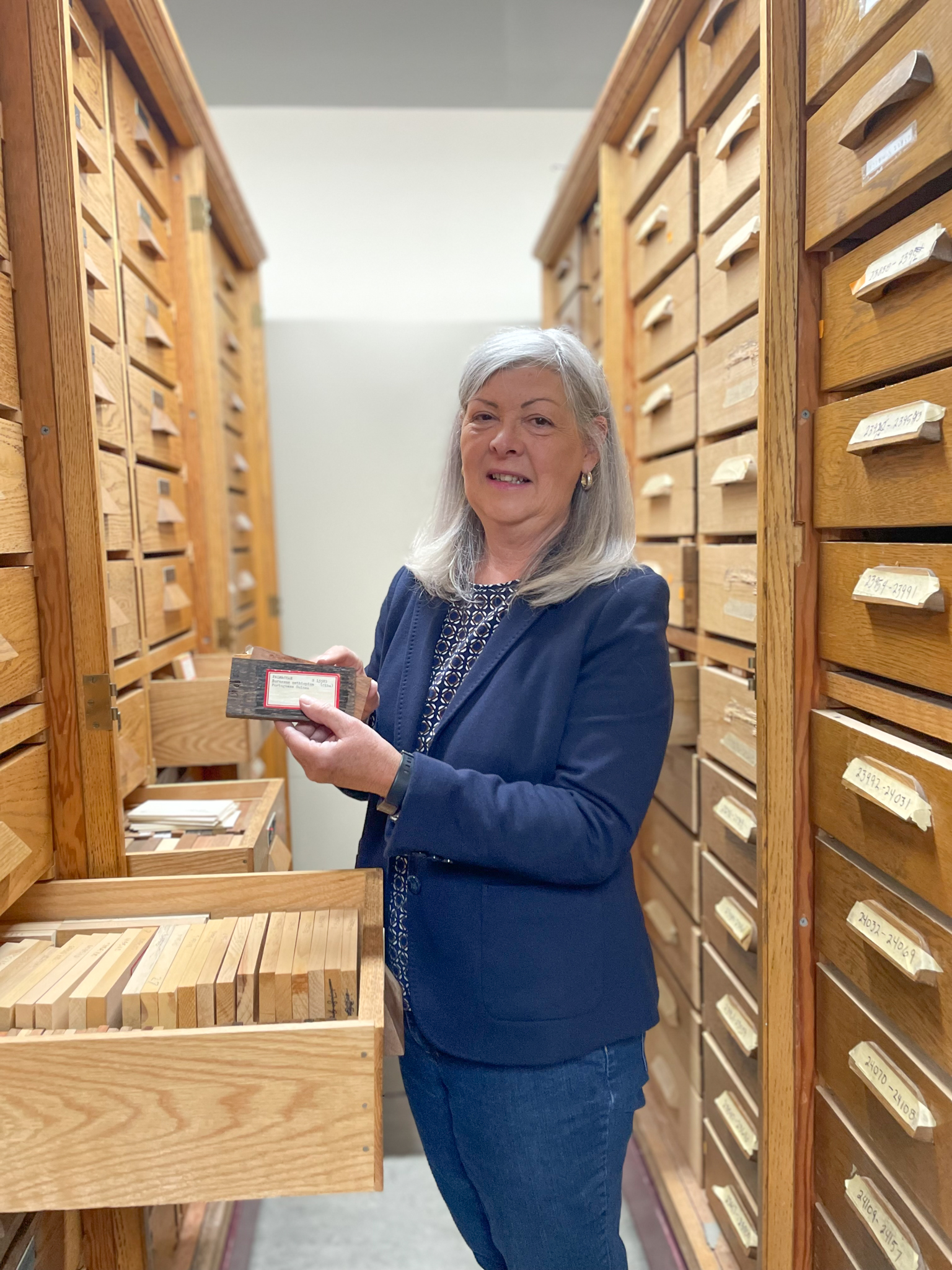Recent Headlines

Dr. Susan Anagnost
ESF Shares a Century of Knowledge about Wood
Detailed information about the expansive contents of ESF's wood collection – 40,000 samples that represent 100 years of gathering wood from around the globe – will soon be made available to scientists all over the world.
The contents of the H.P. Brown Wood Collection in Baker Laboratory are being painstakingly cataloged in the growing ESFWOOD database, to be shared eventually with laboratories, agencies and other universities involved in the study and identification of wood.
"The objective is to create a digital database of the wood samples that is accessible and searchable," said Dr. Susan Anagnost, who leads the project. "There is a lot of interaction worldwide among wood anatomists and use of wood collections, not only for research but to verify species of lumber in commerce to ensure proper identification. Illegal logging and importation are massive problems around the world that affect not only the wood products industry and users, but endangered trees that are logged illegally, forest ecosystems that are damaged and local communities that are harmed."
The collection is one of nearly 180 wood collections – called xylaria – around the world. ESF's effort to share information with its global counterparts puts the College in the same realm as the famed Kew Gardens in London and the USDA's Forest Products Laboratory in Wisconsin. Most xylaria are maintained by agencies that work in the field of forestry.
Anagnost is the director of the ESF Tropical Timber Information Center, which houses the wood collection. The collection is named for the late Harry Phillip Brown, a longtime faculty member who was the first chair of the College's wood technology department. Brown began amassing samples in the 1920s.
Today, the collection occupies more than 500 drawers with samples from six continents; most are from South America, Africa, and Asia. Nearly 800 North American trees are represented in a unique set of wood samples that were collected by Brown. The collection also holds 5,000 microscope slides for study. The information about where and when each piece was collected, and by whom, will go into the database. In some cases, there are hand-drawn maps or other descriptions that show where samples were obtained. Anagnost said the maps could allow researchers to return to a region for follow-up research such as comparative ecological studies.
Sharing information about how to identify wood can help curtail the harvesting of endangered species – authorities work to shut down the import of wood from protected trees, so proper identification is a tool to fight illegal harvesting. Regardless of whether a species is considered threatened, proper identification can also be used to combat the importation of wood from forests that are not sustainably managed.
"It's a pretty incredible collection," Anagnost said. "And sharing this information with other wood scientists and government agencies will enhance the protection of endangered species as well as sustainable forest management."
Building the database is an ongoing project, but scientists are already putting the information to use.
"Although it will take time to complete the ESFWOOD database, we have already started to assist with government efforts to thwart illegal importation of timber and wood products," Anagnost said. "We are collaborating with the USDA Forest Service Wood Identification and Screening Center (WISC) and the National Fish and Wildlife Forensic Laboratory (NFWFL) in Ashland, Oregon, to assist in their efforts to identify timbers for the U.S. government. We are providing wood samples that they are using to build NFWFL's reference database, Forensic Spectra of Trees (ForeST), for a new chemistry-based method for wood identification. They in turn will provide spectra to be included in the ESFWOOD database, as well as provide analysis of our samples for our own research program."